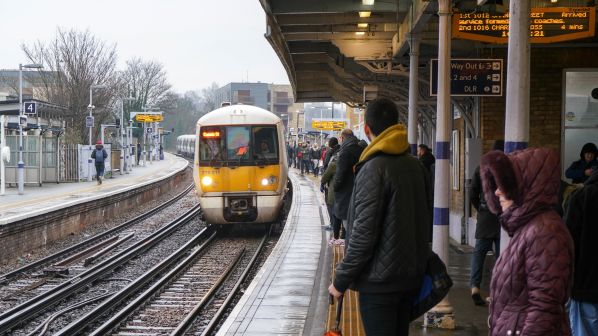Khan made the call on March 26 as TfL published its Strategic Case for Metroisation in South and South East London.
“By viewing the transport network as a whole, rather than individual lines run by different companies, we have an opportunity to radically reshape the network at the same time as running it more efficiently,” the document states. “Rather than building new lines from scratch we can use the existing network in better ways to deliver for London.”
The strategy says that the heavy rail network was developed incrementally by competing operators, limiting connectivity between the south central and south eastern networks.
Operational performance of Southern and Southeastern suburban services compares poorly with the TfL-controlled London Overground network. Between 2010-11 and 2017-18, London Overground Southern suburban services achieved on-time performance of just 53%, with 62% for Southeastern and 80% for London Overground.
The core ‘metroisation’ proposal would provide 39 additional services during the morning peak hour, an increase of 22%, and an extra 36 trains off-peak, representing a 30% increase. TfL says these benefits would be spread across the network, with better frequencies on both stopping services and longer-distance fast services.
The core proposals include:
- a flagship Balham - London Victoria route with up to 18 trains per hour (tph), regular and frequent direct links to west London via the West London line, and more services from Wallington to Croydon, and Cheam to Sutton
- regular 10-minute interval services all day from Victoria to Herne Hill and Lewisham, between town centres in south east London such as Orpington and Bromley, and on the Greenwich, Bexleyheath, Sidcup and Grove Park lines
- metro-frequency services on the East London and Sydenham lines with trains every seven to eight minutes from London Bridge to Tulse Hill, and every 15 minutes to the Crystal Palace and Hackbridge lines
- simpler all-day four tph service on the Wimbledon Loop, and
- new Streatham Common and Brockley interchanges, enabling passengers to change easily between services to different central London termini and orbital lines.
Indicative estimates calculated in 2014 suggest these enhancements could be delivered for around £1.7bn including contingencies although TfL says work would be needed to update these estimates and add more details to support the development of the full business case.
TfL says the proposal would provide service levels in south and south east London that are comparable with those elsewhere in the capital. “Predictable and frequent services, and a more open layout on metro-style trains, could make travel easier and more accessible,” the document states. “Improved connectivity could deliver social benefits by encouraging more active travel and reducing social isolation, as well as improving air quality.”
According to the strategy, the ‘metroisation’ plan could be delivered through the Department for Transport (DfT) National Enhancements Pipeline, the franchising process, or the transfer of services to TfL. As with the London Overground network, funding and financing challenges could be overcome through phased implementation.

